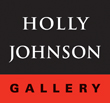
REVIEW: Painting architecture - Tommy Fitzpatrick’s fractured modernist visions
April 6, 2021 - Harriet Lloyd Smith for WALLPAPERS*
Tommy Fitzpatrick’s new series of electric-hued architectural paintings capture the American artist’s 30-year fascination with modernism. Tommy Fitzpatrick has long had a fascination with how buildings are made. Growing up in the Dallas suburbs, the downtown urban environment became a magnet. ‘I’ve always liked modernism and Bauhaus, and found that urban areas had a similar quality of newness and futurism,’ he tells Wallpaper*.
An exhibition of new paintings, titled ‘Site’, at Qualia Contemporary Art in Palo Alto, California, marks a departure in Fitzpatrick’s conventional approach: instead of painting from life or photographs, he turned to computer-aided design (CAD) software to create renderings that he then translated into paint. ‘When it comes to architecture, I often find myself loving the renderings more than buildings themselves; they’re a proposition of the fact,’ he explains.
In 1998, Fitzpatrick assisted American minimalist artist Frank Stella with a mural installation in Houston. The experience had a deep impact on Fitzpatrick and encouraged him to transition from smooth, seamless compositions to geometric, electric-hued explosions.
Fitzpatrick is drawn to buildings both for their ephemerality and longevity, particularly modernist architecture that once heralded a better society. The artist has also explored architectural projects that never came to be; his 2017 series Crystal Cities was inspired by Frank Lloyd Wright’s unrealised Washington, DC project of the same name.
Fitzpatrick’s paintings present both the ruins and utopian potential of his subjects, and a record of past ideals. ‘Things come and go, that is reflected in our architecture’, he says. ‘Buildings that were once a remarkable feat of their time go out of style and are knocked down for the latest innovations. But there seems to be a quality within certain buildings and landmarks that acts as a universal commonality.’
His works almost sculptural in depth, Fitzpatrick stretches his architectural subjects to their abstracted extremities. What might have been roofs, windows, glass and steel fracture into shards of impastoed ambiguity.
The artist’s fascination with architecture and construction extends to his tools, materials and processes. Fitzpatrick begins by pouring acrylic paint onto the canvas in a similar manner to how cement is poured to make brutalist buildings. He uses tools one might find on a building site, like concrete placers and trowels, to concoct and cut through congealed slabs of paint. The painted surface protrudes like a relief to such an extent that its peaks cast their own shadows.
Fitzpatrick structures his paintings like an architect plans a building: the foundation, the frame, and the exterior. ‘When you look at the painted surface you can tell how the paint was laid down in my work. It’s a frozen human moment; suspending action in one image.’
Download Article (PDF)Back to News
